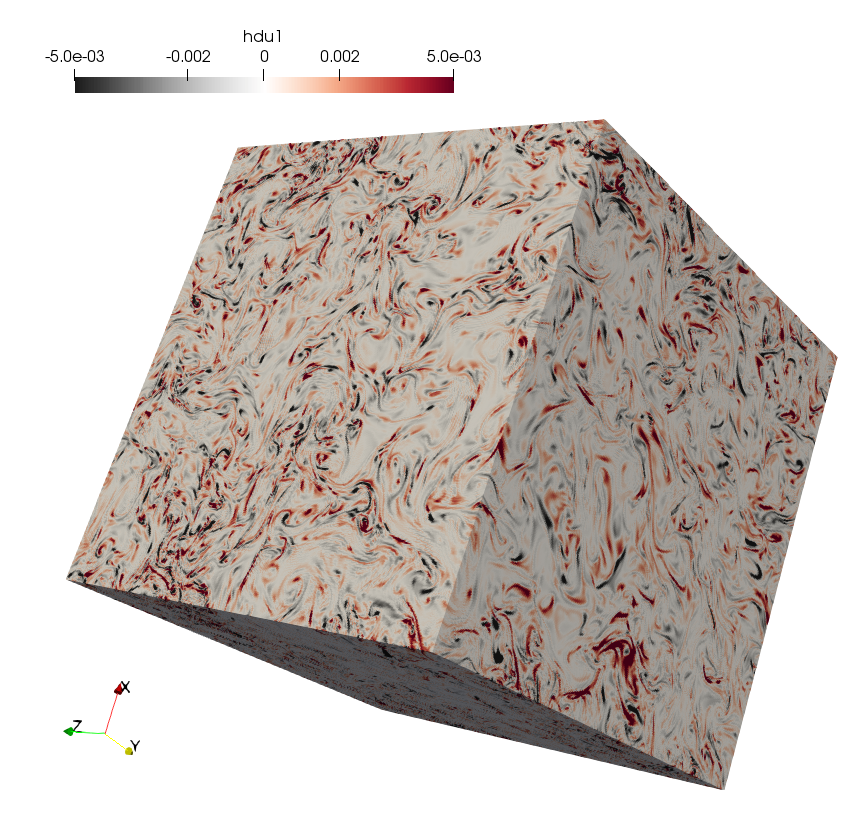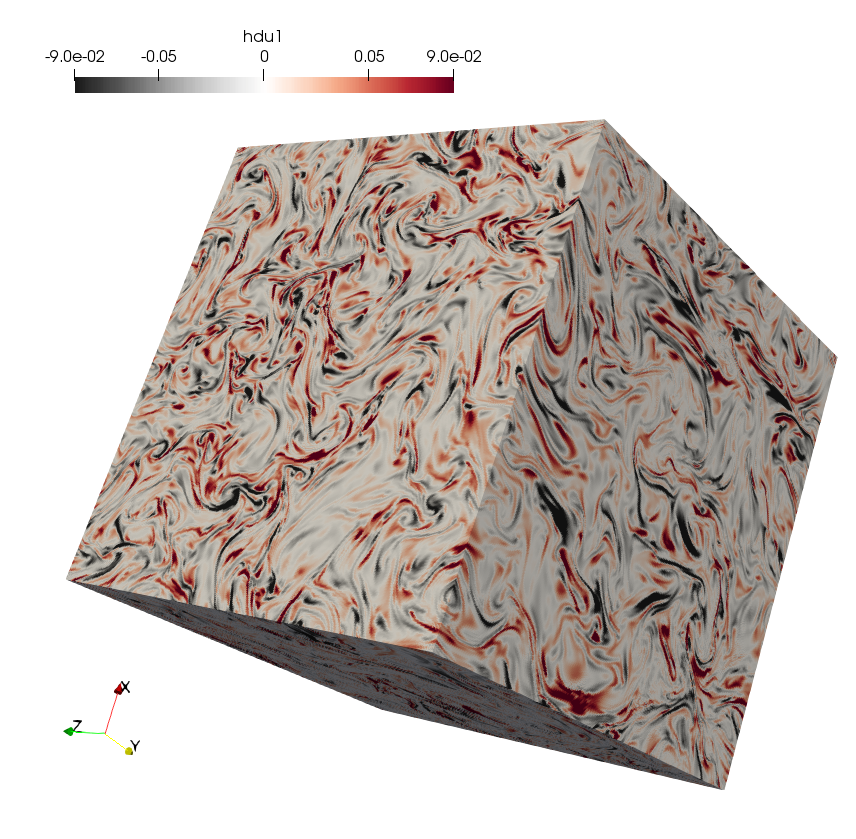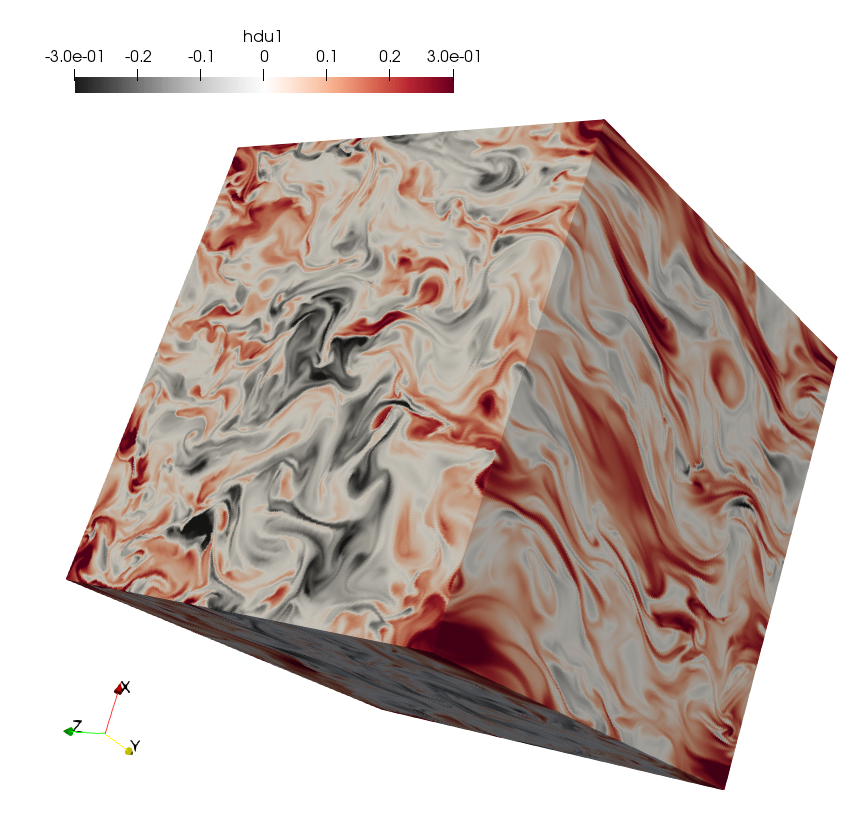Turbulent Dynamos
Coherent magnetic fields are observed in stars, galaxies and galaxy clusters and influence important physical processes in these astrophysical systems. The origin of cosmic magnetic fields is thought to be the result of turbulent dynamos which convert kinetic energy of the fluid to magnetic energy.
There are two kinds of turbulent dynamos.
- Mean field (or large scale) dynamo : amplifies fields correlated on scales larger than the fluid stirring scale or the energy carrying scale
- Fluctuation (or small scale) dynamo : amplifies fields correlated on scales smaller than the fluid stirring scale.
My thesis work, under the supervision of Prof Kandaswamy Subramanian, is titled
Magnetic fields in the universe: Understanding their origin and evolution.
In my thesis work, I investigated the turbulent dynamo theory and its applications both analytically and numerically.
Key results from my thesis:
- Extending Kazantsev's theory for small-scale dynamo (SSD) to include finite time correlation effect. We solved this extended equation to find a reduced growth rate for the SSD but one which intriguingly preserves the magnetic power spectrum of the Kazantsev form.
- Using high resolution simulations, it was shown that SSD grown fields can help understand Faraday Rotation measures in galaxy clusters. This is because as the SSD saturates, the magnetic integral scale grows from resistive scale to 1/4-1/3 of the velocity out eddy scale.
- 1024^3 simulations of helical dynamos at Pm=0.1 and Pm=10 show that a unified dynamo operates in kinematic regime. This dynamo saturates at small scales and then at progressively at larger scales. As the small scale fields become increasingly coherent on saturation, this averts the magnetic Reynolds number dependent quenching of the large-scale field.
512^3, Pm=1 small-scale dynamo
Beyond PhD:
More recently, further investigation of helical dynamo simulations (with and without shear) has yielded
a novel result. We have identified a novel intermediate second stage of exponentially growing large-scale field,
different from that of the kinematic unified dynamo, due to a quasi-kinematic LSD.
The term 'quasi-kinematic' is to signify that this LSD action arises as the SSD saturates (indicating that the system has become nonlinear)
while the large-scale fields are possibly unaffected by the Lorentz force. This arises in a previously unidentified parameter regime, but one that is in
fact expected to be generic in astrophysical systems. This important result, that a quasi-kinematic LSD can operate
in large magnetic Reynolds number systems, alleviates the concern that large-scale fields are overwhelmed by rapidly growing small-scale fields in such systems.
We have just submitted it for publication.


